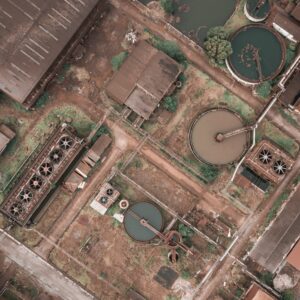District cooling is the cooling equivalent of district heating. Working on broadly similar principles to district heating, district cooling delivers chilled water to buildings like offices and factories needing cooling. In winter, the source for the cooling can often be seawater, so it is a cheaper resource than using electricity to run compressors for cooling. Alternatively, District Cooling can be provided by a Heat Sharing Network which enables each building on the circuit to use a heat pump to reject heat to an ambient ground temperature circuit.
There are also 5th generation district heating and cooling systems (so called cold district heating networks) that are able to provide both heating and cooling simultaneously. In these systems the west heat from chillers can be recycled and used for space heating or hot water production.
Meem-Solutions was responsible for the design and development of engineering drawings, plant and material selection, procurement, installation, commissioning and performance validation of the mechanical and electrical chilled water process plant for the district cooling system.
The scope of work included the following:
- Design and construct 1 x 43,750 TR district cooling plant, and 7 x chiller modules of 5000 TR capacity
- Supply and install 2 x thermal energy storage tanks of 4375 TR capacity each with a total capacity of 43,750 TR
- Supply and install 13 transformers rated 2000 KVA
- Supply and install 5 x MV switchgears on the ground floor feeding to 14 chillers of a total load of 23.4MW
The LV Room contains 13 MDBs to feed power to the building services and 37 VFDs, which are catering to respective equipment such as the primary, secondary and condenser pumps, the makeup water pumps, the cooling towers on the roof and building services at all levels. One backup generator of 315 KVA is provided for maintaining an essential power supply in case of a mains power supply failure.
Common area lights are controlled by a lighting control system. Exit and emergency lights are connected to a central battery emergency system. The fire alarm system is as per the requirement of Civil Defence Authority. The telephone network connection is from Du and design is as per Du design guidelines. The Low Current System consists of CCTV and an access control system.
The chilled water circuit comprises eight primary pumps and nine secondary pumps and the condenser circuit comprises eight condenser pumps and eight cooling towers cells on the roof. The chillers are located in the basement, the TES tanks on the ground floor, all pumps on the first floor and the cooling towers on the roof.
Upon completion the project will provide chilled water to the commercial and showroom buildings, residential buildings and town houses.



